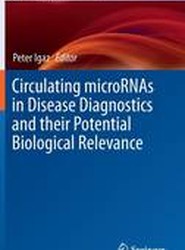(To see other currencies, click on price)
MORE ABOUT THIS BOOK
Main description:
Research in the pharmaceutical industry today is in many respects quite different from what it used to be only fifteen years ago. There have been dramatic changes in approaches for identifying new chemical entities with a desired biological activity. While chemical modification of existing leads was the most important approach in the 1970s and 1980s, high-throughput screening and structure-based design are now major players among a multitude of methods used in drug discov ery. Quite often, companies favor one of these relatively new approaches over the other, e.g., screening over rational design, or vice versa, but we believe that an intelligent and concerted use of several or all methods currently available to drug discovery will be more successful in the medium term. What has changed most significantly in the past few years is the time available for identifying new chemical entities. Because of the high costs of drug discovery projects, pressure for maximum success in the shortest possible time is higher than ever. In addition, the multidisciplinary character of the field is much more pronounced today than it used to be. As a consequence, researchers and project managers in the pharmaceutical industry should have a solid knowledge of the more important methods available to drug discovery, because it is the rapidly and intelligently combined use of these which will determine the success or failure of preclinical projects.
Contents:
1 Modern methods of drug discovery: An introduction.- 2 Proteomics.- 3 Bioinformatics.- 4 High-throughput screening technologies.- 5 Natural products for lead identification: Nature is a valuable resource for providing tools.- 6 Combinatorial chemistry: Mixture-based combinatorial libraries of acyclic and heterocyclic compounds from amino acids and short peptides.- 7 Computational approaches towards the quantification of molecular diversity and design of compound libraries.- 8 The role of protein 3D-structures in the drug discovery process.- 9 NMR-based screening methods for lead discovery.- 10 Structure-based design of combinatorial libraries.- 11 3D QSAR in modern drug design.- 12 Physicochemical concepts in drug design.- 13 Computer-aided prediction of drug toxicity and metabolism.
PRODUCT DETAILS
Publisher: Springer (Birkhauser Verlag AG)
Publication date: October, 2012
Pages: 292
Weight: 474g
Availability: Available
Subcategories: Biochemistry, Pharmacology
From the same series



































